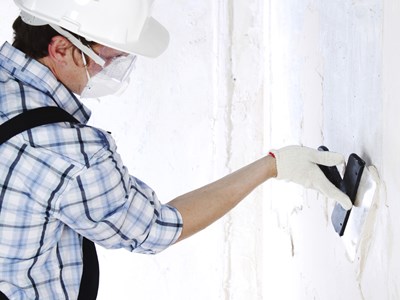Gyproc Repairs Done Right in Brisbane

Those little holes in the wall can be a real downer. Not only are they eyesores, they also increase the risk of further structural damage to your home or business. But fear not, most minor gyproc repairs can be tackled easily by individuals with a basic skills level and knowledge of common household tools.
One of the easiest do - it - yourself gyproc repairs methods is applying a ready - made drywall patch, available at any home centre or hardware shop. Then, using a utility knife to trim frayed edges, tidy up the border of the hole to be repaired. Next, carefully cut the ready - made drywall patch so that it fits the hole to be covered. Be sure to leave a bit of extra backing to affix to the gyproc surrounding the hole.
You will want to be sure to thoroughly cleanse and dry the area around the hole so the patch will stick solidly to the wall. Especially dirty or greasy areas may require an application of trisodium phosphate (available at your local paint shop), but warm, soapy water will usually be enough to do the trick.
Now it is time to apply the patch. To accomplish this as smoothly as possible, use a putty knife. You will also need a wide - blade putty knife to apply a light topcoat of joint compound over the repair area. This will allow you to conceal your repair work for a smooth, new appearance. Then liberally apply non - shrink joint compound, again, using a putty knife. Smooth the compound with the knife and allow to fully dry before applying additional coats as needed.
Finally, lightly sand the repaired wall using a drywall sander and sandpaper attachment. You may need to further conceal any remaining minor imperfections by applying a very thin layer of joint compound.
This method of is popular for gyproc repairs involving small holes or cracks.
There is another way to fix those little holes in your walls. First, start by cleaning the repair area as in method one. Then use a water spray bottle to lightly wet the area you wish to repair. The goal is to allow joint compound, which will be applied later, to stick. Trisodium phosphate may be necessary when dealing with greasy, grimy kitchen walls.
Next, use a putty knife to liberally apply non - shrink joint compound to the repair area. Smooth with the knife, applying additional thin coats if necessary. A helpful tip: many thin coats are better than one thick one. You will then allow the patched area to fully dry before sanding or adding additional coats as needed. Always ensure the repair area is thoroughly dry before adding any extra compound.
Light sanding follows. Use a drywall sander with affixed sandpaper. Follow by touching up minor flaws or imperfections by applying an ultra - thin compound topcoat with a putting knife.
See? Minor gyproc repairs are relatively easy fixes which just about anyone with a modicum of DIY experience can handle with ease. For larger holes and more substantial gyproc repairs in Brisbane, consider consulting a building repair professional.







